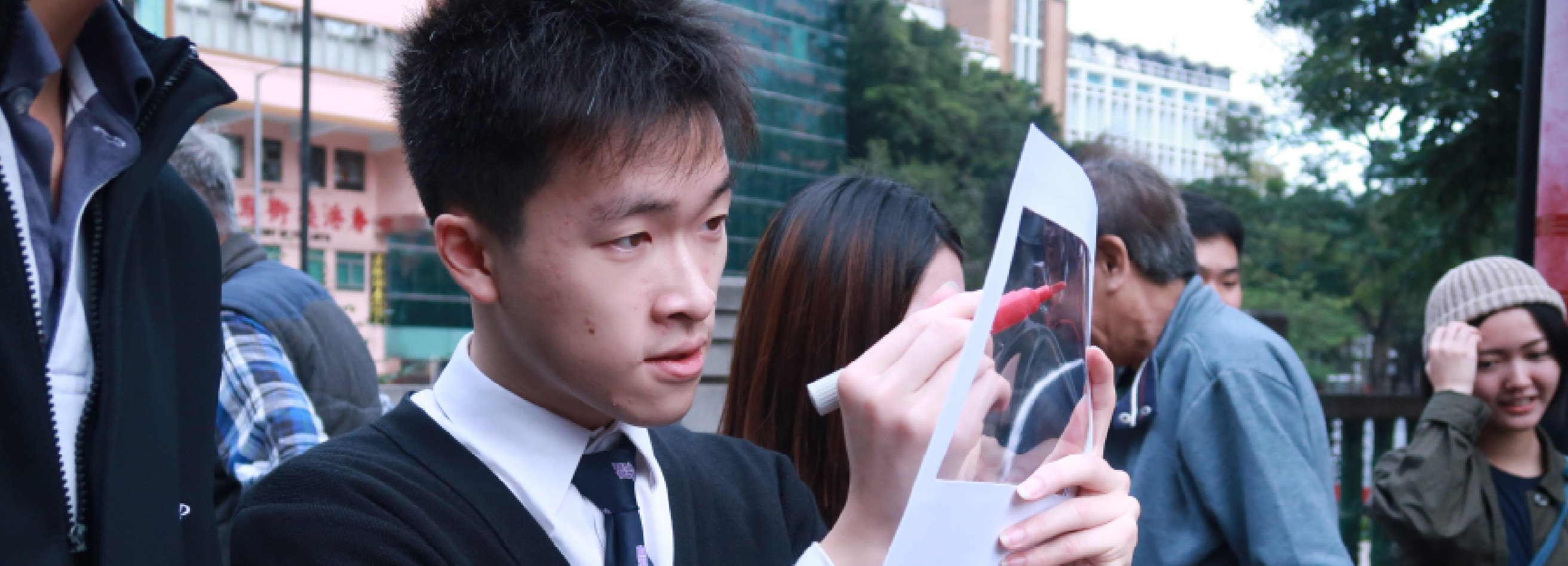Authors: Chan Sing Yeung and Siu Man Ting
(Reposted from the Edu Insights Column of the HK Educators’ Club)
Do you think you are creative enough? Everyone is born with creativity. However, creativity can weaken as people grow up, especially under Hong Kong's education system, which puts too much emphasis on exams and causes students to prioritise identifying answers rather than engaging in the learning process. To get good scores, students practice exam questions again and again and memorise standard answers, gradually developing a stereotypical thinking pattern. These students (mostly underperforming ones) become unable to work out solutions to new problems.
Clearly, standardised education is not in accord with the times. In a world characterised by volatility, uncertainty, complexity and ambiguity, students have to be more flexible, innovative, respectful, and inclusive than ever to adapt to a fast-changing environment.
A Glimpse into Design Thinking
The concept of design thinking took shape in the 1960s. It was first introduced in science and engineering and later applied in other fields, such as architecture and urban planning. Different from goal-oriented thinking, design thinking is a human-centred process that tackles various problems in daily life and society by creating products, services, and experiences based on an understanding of users’ needs.
Our students participated in the SoInno Design Education provided by the “PolyU Jockey Club “Operation SoInno” Programme, which aims to boost students’ creativity and divergent thinking. Guided by a designer team, 12 Form 5 students were divided into groups and tasked with designing and making toys for Form 4 students in a bid to help them gain conceptual knowledge of energy technology and environmental studies, an area of liberal studies, and reflect on the relationship between humans and nature through games.
The first stage of design thinking is to use empathy to understand users’ needs. We asked each group to conduct an interview with Form 4 students using the 5W1H method (especially questions beginning with “Why”) to observe their emotions and behaviours and understand their preferences. After the interview, each group organised the information obtained and defined users’ characteristics, needs, and the reasons for those needs. Then, they sought solutions by asking each other how they might satisfy users’ needs (see Figure 1).
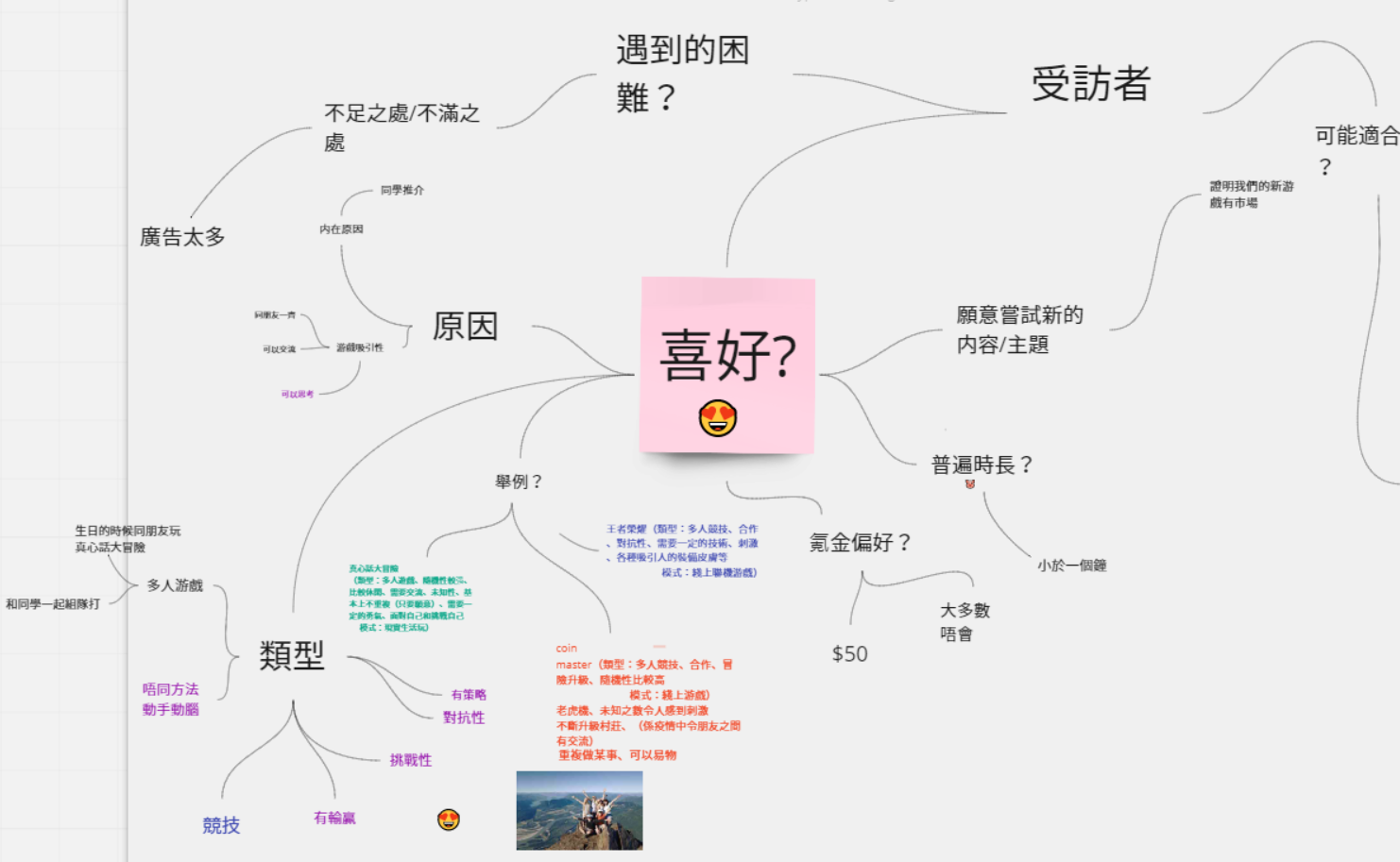
Figure 1
The next stage of design thinking is to ideate. Group members brainstormed and wrote their design ideas (e.g., toy type, story background, and rules for gameplay) on sticky notes (see Figure 2). At this stage, the students didn’t need to consider the designs’ feasibility or their goals. Instead, they were encouraged to explore all kinds of possibilities to their hearts’ content. Meanwhile, the instructors helped to create an environment of open communication. To keep everyone’s enthusiasm high, they reminded group members that they should not criticise others’ ideas. Then, each group set basic criteria for voting (such as picking the most feasible solution or their favourite one), chose the two or three toy design ideas with the most votes, and made them a reality.
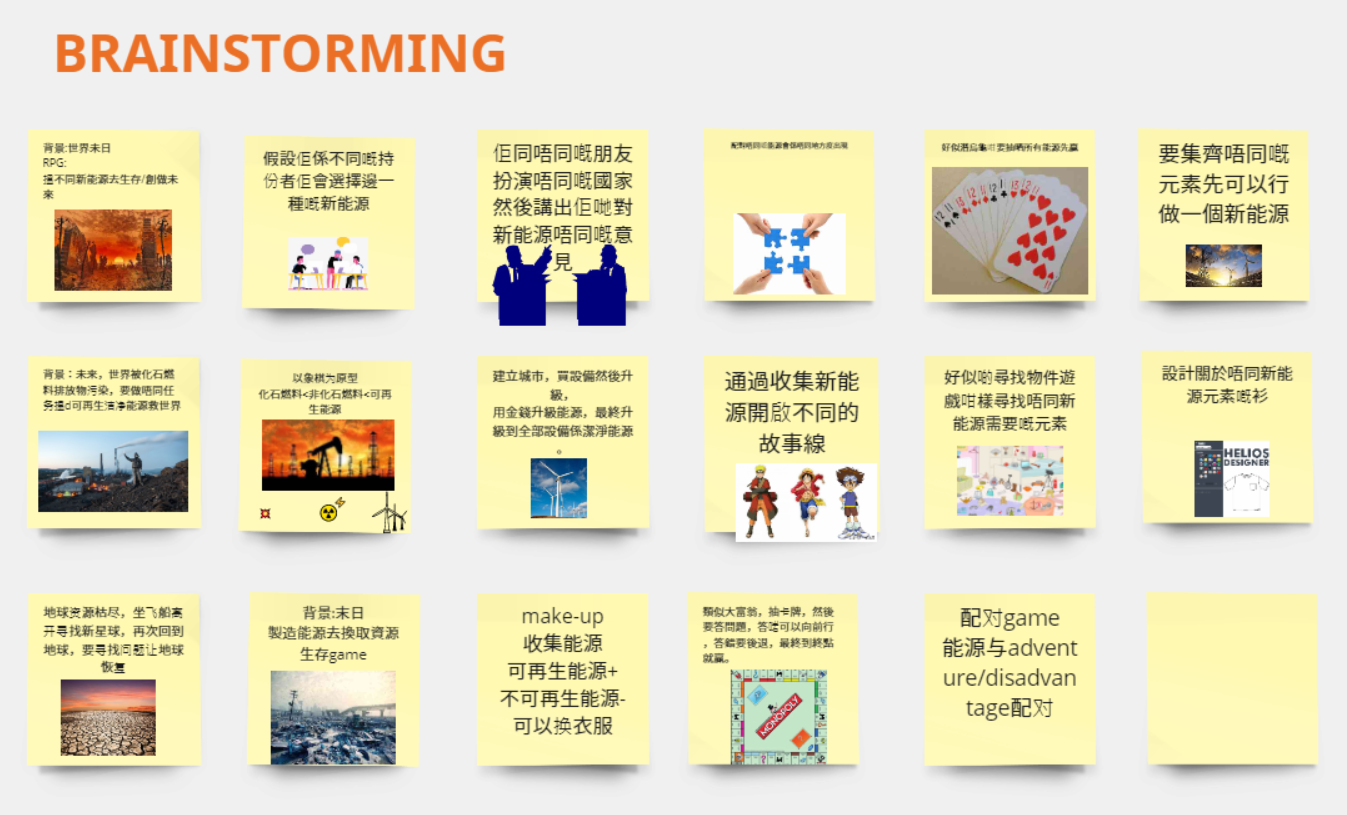
Figure 2
Each group developed prototypes of the toys using tools like paper, ordinary stationery, and a 3D printer and asked the other groups to test whether these toys would satisfy users’ needs (the Form 4 students were unable to test the prototypes due to COVID-19 restrictions). If they identified any problems during the test, the group members had to solve them or even start all over again to achieve better results.
Reflection on Education
One group of students came up with the idea of changing the rules of the board game Monopoly: whoever builds the most energy plants wins. Some group members proposed that each square of the board should contain a brief description of each country to make the game more educational. However, others insisted that this change would make the game less interesting. The debate was in deadlock for a while as both sides made good points. In the end, they sought common ground while maintaining their differences. Putting themselves into the player’s shoes, they decided to add information about various countries’ energy milestones to the event cards (which triggered rewards or losses) to strike a balance between education and fun (see Figure 3). Conflicting opinions are inevitable in the design process. However, these initial stumbling blocks are actually stepping stones for future design, because constructive arguments can boost students’ empathy and inspire them to create more user-friendly designs.
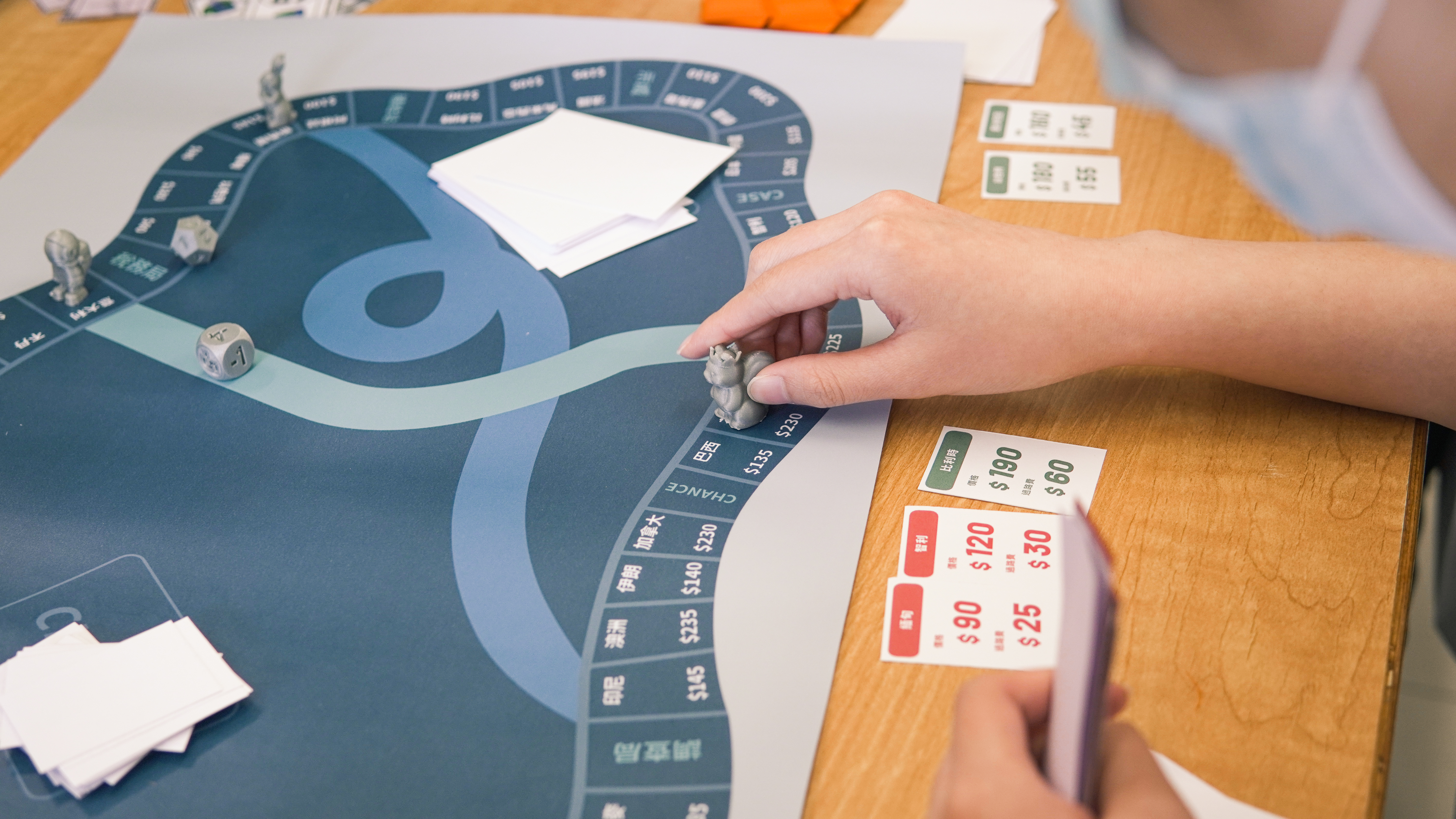
Figure 3
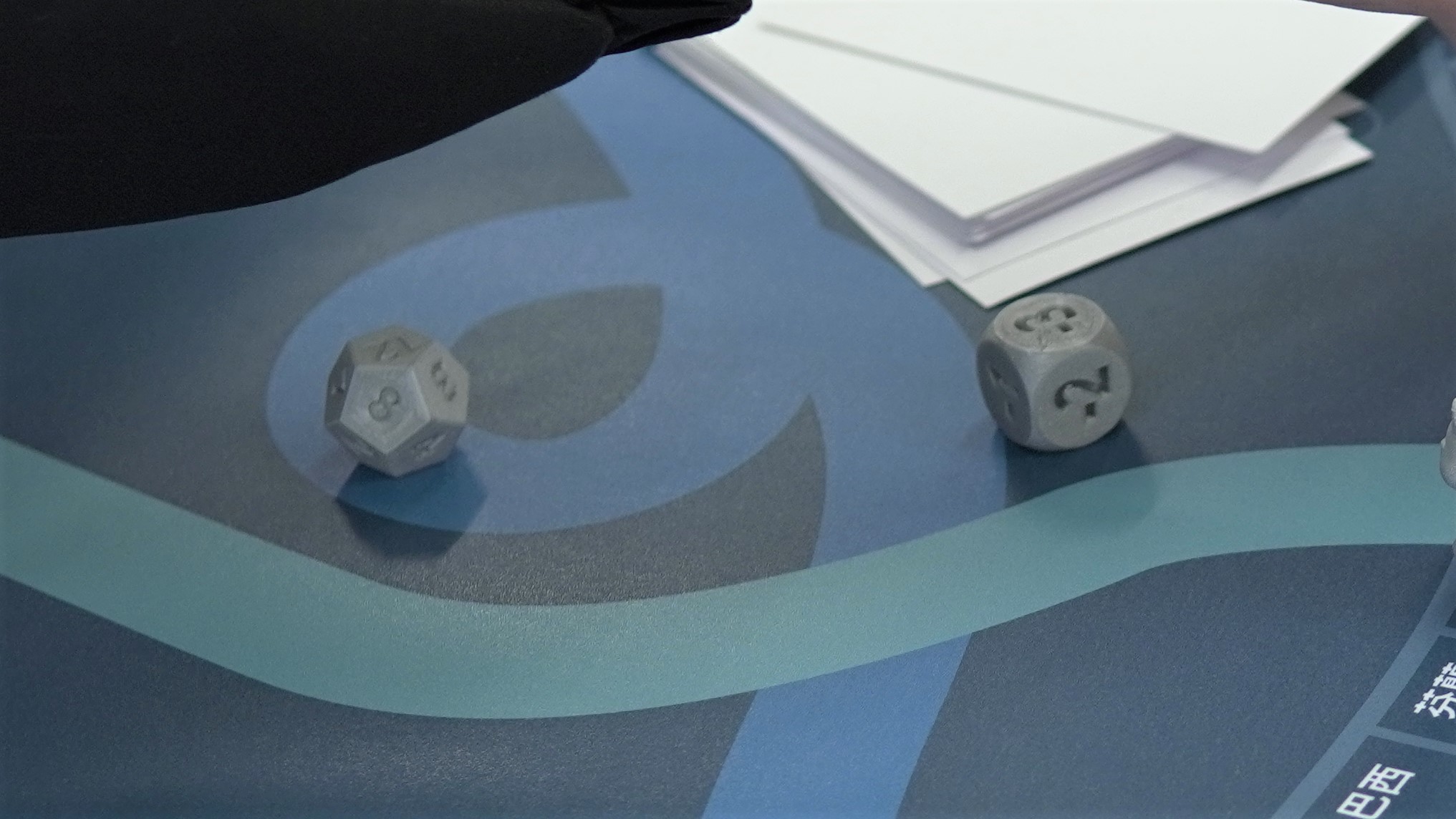
Design thinking activities not only enhance students’ creative thinking and empathy but also arouse their curiosity. For example, students designed two dice, one with positive numbers 1-12 and another with negative numbers 1-6 (see Figure 4). Suddenly, one of them asked about probability, which stirred the curiosity of the other students and the instructors. In the school system, students get used to distinguishing knowledge by subject as if each subject is independent and unrelated to others. However, it turns out that interdisciplinary learning does not need to be deliberately created, rather, it occurs naturally in the classroom.
Although liberal studies teaching focuses on knowledge integration, it is also subject to the curriculum framework. During training in design thinking, students put forward ideas and translate them into real products. When they see the results of their hard work, they will feel the joy of success and the satisfaction of their curiosity, which can motivate them to think more about their products. They may consider these thoughts to be ‘boring’, but the ideas the students have reflect their intense curiosity. Curiosity prompts people to gain new knowledge. We would be delighted to see students putting their knowledge of different subjects into practice.
Design Thinking Understood, What’s Next?
Design thinking can be shaped through learning. The key to developing students’ creativity lies in the belief that each individual has untapped creativity, which they can use to open up unlimited possibilities. In this process, the teacher is no longer a boss but a facilitator in the classroom. As the facilitator, the teacher may modify the activity process, help group members to deal with disputes, and share personal experiences, while students do most of the learning by themselves.
Creative thinking, empathy, and curiosity are all indispensable for social innovation. Nowadays, people are familiar with conventional solutions to many social problems but fail to resolve them once and for all. Social innovation, however, provides another way out of this dilemma. Take the story of the Three Little Pigs as an example. The pigs might have found other ways to survive the wolf’s attacks apart from changing the housing materials, such as changing their houses’ structure or shape or designing a device to prevent attack. If you want the next generation to adapt to changes and contribute to social progress, you might consider using the principles of design thinking in education to address the needs of our future society.
